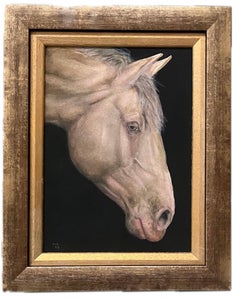Aubrey Williams Art
Aubrey Williams, Guyanese artist. Williams has recently been reassessed by the Tate and Manchester Art Galleries and been the subject of television documentaries. He was best known for his large, oil-on-canvas paintings, which combine elements of abstract expressionism with forms, images and symbols inspired by the pre-Columbian art of indigenous peoples of the Americas. Born in Georgetown in British Guiana (now Guyana), Williams began drawing and painting at an early age. He received informal art tutoring from the age of three and joined the Working Peoples' Art Class at the age of 12. After training as an agronomist, he worked as an Agricultural Field Officer for eight years, initially on the sugar plantations of the East Coast and later in the North-West region of the country - an area inhabited primarily by the indigenous Warao people. His time among the Warao had a dramatic impact on his artistic approach and initiated the complex obsession with pre-Columbian arts and cultures that ran throughout his artistic career. Shortly after he qualified as an Agricultural Officer, Williams contacted E. R. Burrowes and returned to the Working People's Art Class, but this time as a teacher and organizer. Together they extended the WPAC beyond central Georgetown by setting up auxiliary classes throughout the East Coast. Williams himself established new classes in the agricultural regions in which he was working, and would often lead classes when Burrowes was unavailable. The classes were held at least twice weekly. Williams left Guyana at the height of the Independence Movement in 1952 and moved to the United Kingdom. Following his first exhibition in London in 1954, he became an increasingly significant figure in the post-war British avant-garde art scene, particularly through his association with Denis Bowen's New Vision Centre Gallery. In 1966, he came together with a group of London-based Caribbean artists and intellectuals to found the Caribbean Artists Movement, which served as a dynamic hub of cultural events and activity until its dissolution in 1972. From 1970 onward, Williams worked in studios in Jamaica and Florida as well as the UK. It was during this period that he produced three of his most well-known series of paintings, Shostakovich, The Olmec Maya and Now and Cosmos. In 1989, paintings by Williams were included in an exhibition at the Hayward Gallery entitled The Other Story, which focused on the work of African and Asian artists in post-World War II Britain. This was the first time that his work was exhibited in a mainstream public art gallery in the UK. and featured his Cosmos series. In the words of Geoffrey MacLean, "It showed the vast span of Williams's spiritual and intellectual development, from the birds of Guyana and the environment of his childhood, through the memory of his Amerindian heritage, culminating in an appreciation of universal expression through music and spiritual realization through the cosmos." Williams died in London on 17 April 1990, aged 63.
1970s Expressionist Aubrey Williams Art
Watercolor
1970s Expressionist Aubrey Williams Art
Watercolor
1970s Expressionist Aubrey Williams Art
Watercolor
2010s Expressionist Aubrey Williams Art
Paper, Pastel, Ink, Pencil, Color Pencil
2010s Naturalistic Aubrey Williams Art
Paper, Watercolor
Artist Comments
A fox caught in mid-leap burst to life in dashes of red, gold, and violet. Built with layered washes and spontaneous shapes, the painting suggests the animal's ...
21st Century and Contemporary Expressionist Aubrey Williams Art
Watercolor
19th Century Romantic Aubrey Williams Art
Watercolor
20th Century Expressionist Aubrey Williams Art
Paper, Pastel
2010s Naturalistic Aubrey Williams Art
Paper, Watercolor
21st Century and Contemporary Expressionist Aubrey Williams Art
Paper, Ink, Pen
2010s Expressionist Aubrey Williams Art
Paper, Pencil, Color Pencil
1930s Expressionist Aubrey Williams Art
Ink, Paper
2010s Expressionist Aubrey Williams Art
Paper, Pencil, Color Pencil
1990s Expressionist Aubrey Williams Art
Ink, Handmade Paper
1990s Realist Aubrey Williams Art
Watercolor, Paper



